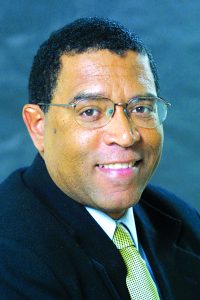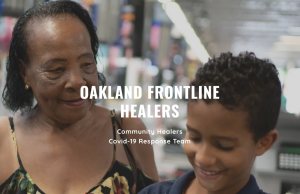Health
Washington, Others Will Treat e-Cigarettes as Drug Paraphernalia

This June 12, 2013, file photo shows a person posing with an electronic cigarette, or e-cigarette. (AP Photo/Tim Ireland, PA)
RICHMOND, Va. (AP) – Some schools are getting tougher on e-cigarettes, even punishing possession of the devices more harshly than regular cigarettes.
The devices, which heat a nicotine solution to create a vapor instead of burning tobacco, have passed traditional smokes in popularity among teenagers. Schools are clamping down because e-cigarettes, sometimes also known as vaporizers, can also be used for illegal substances like marijuana.
Most schools have folded e-cigarettes into their anti-tobacco policies, which typically punish students with detention, a letter home and sometimes a tobacco education class.
But other schools in states including North Carolina, New Jersey, Washington and Connecticut, are grouping the devices in with bongs and pipes, meaning students could face long suspensions and required drug tests and have possession of drug paraphernalia marked on their school record.
“Our goal is to reduce access and discourage use on campus,” said Sarah D’Annolfo, dean of students at The Taft School in Watertown, Connecticut.
The co-ed boarding school amended its policy this school year to have e-cigarettes fall under its drug and alcohol policy. A disciplinary committee made up of faculty and students evaluate violations case-by-case, but they could result in a weeklong suspension and a mark on their record rather than a chat with the dean and school doctor and parental notification.
“It definitely sparks conversation within the school community about e-cigarette use and the possible dangers and the possible benefits,” D’Annolfo said. “That conversation alone is a hugely important learning opportunity.”
According to an annual government survey of more than 41,000 students, e-cigarettes have surpassed traditional smoking in popularity among teens.
Some 16 percent of 10th-graders had tried an e-cigarette in the past month, and 17 percent of high school seniors. Regular smoking continued inching down, to 7 percent of 10th-graders and 14 percent of 12th-graders. However, the survey didn’t ask about repeat use, or whether teens were just experimenting with something new.
Most agree it should be illegal to sell e-cigarettes to kids, and most states have banned such sales. But health and public policy experts can’t say for certain whether the electronic devices are a good thing or a bad thing overall, whether they help smokers kick the habit or are a gateway to ordinary paper-and-tobacco cigarettes.
Nevertheless, companies vying for a stake in the e-cigarette business have revived marketing tactics that helped hook generations of Americans on regular smokes. The TV commercials, race-car sponsorships and candy-flavored nicotine liquid all raise fears that makers are targeting young people to take up an addictive habit.
Last April, the Food and Drug Administration for the first time proposed regulations for e-cigarettes. They would include banning sales to minors and requiring health warning labels. The rules wouldn’t immediately ban the wide array of flavors or styles of e-cigarettes or curb marketing.
Gregory Conley, president of the e-cigarette advocacy group American Vaping Association, said minors shouldn’t have or use e-cigarettes but it’s “pure over-reaction” to punish students caught with them more than students who have regular cigarettes.
Still, the array of possible uses of e-cigarettes has spurred caution among school officials.
“We don’t know if it’s vapor or some kind of hashish oil or if it’s some kind of illegal substance,” said Anne Garrett, superintendent of Haywood County Schools in western North Carolina, where the policies were changed this month to treat the devices as drug paraphernalia.
Some parents think such measures are too harsh. In Parsippany, New Jersey, Kathleen Leone refused to let school officials drug test her 16-year-old daughter after she was caught with her older brother’s e-cigarette in her pocketbook, leading to a four-day suspension.
“I’m not going to sit here and tell you that she should have it, but you know, she’s 16, and 16-year-olds do stupid things,” said Leone, who’s also a teacher. “In her record it says she was suspended for refusal to take (a drug test), and that’s something that could affect her chances getting into a university.”
But the concerns raised by school districts may not be too far-fetched.
Devices that look exactly like e-cigarettes but have a compartment that can be filled with substances like concentrated forms of marijuana are sold online and in stores across the country. In states like Colorado and Washington state, where marijuana is legal for adults over 21, stores not only sell the hash oil itself but sells it in pre-filled cartridges.
Traditional e-cigarettes also are being modified by users for use with the oil, illegal in most of the country.
Much like using an e-cigarette with liquid nicotine, the vapor – along with any odor – produced dissipates quickly. Still, some argue most people could smell the difference.
The National Association of State Boards of Education doesn’t have an official policy on e-cigarettes, but Executive Director Kristen Amundson said she believes the group would recommend that the devices be treated as tobacco products. But if a school district thinks they have a particular problem with the devices, then sending a really clear message may be a good idea, she said.
“But it is always better if school administrators use good judgment and discretion,” said Amundson, a former Virginia legislator and teacher who also served on the school board of northern Virginia’s Fairfax County. “That’s how we end up not having to hear a case of a kindergartner who brought a little paring knife to school suddenly being recommended for expulsion for bringing a weapon to school.”
Activism
AI Is Reshaping Black Healthcare: Promise, Peril, and the Push for Improved Results in California
Black Californians experience some of the worst health outcomes in the state due to systemic inequities, limited healthcare access, and exclusion from medical research. 16.7% of Black adults report fair or poor health, versus 11.5% of Whites. Black adults have the highest death rates from prostate, breast, colorectal, and lung cancer. Statewide, diabetes affects 13.6% of Black adults versus 9.1% of Whites, and 27% of Black adults over 65 have heart disease, compared to 22% of Whites. Life expectancy for Black Californians is about five years shorter than the state average.

Joe W. Bowers Jr.
California Black Media
Artificial intelligence (AI) is changing how Californians receive medical care – diagnosing diseases, predicting patient needs, streamlining treatments, and even generating medical notes for doctors.
While AI holds promise, it also poses risks, particularly for Black patients. It can provide faster diagnoses and expand access to care, but it may also misdiagnose conditions, delay treatment, or overlook patient’s critical needs. AI’s impact on Black patients depends on how biases in medical data and algorithms are addressed in its development.
“As we progress toward a society with increased use of AI technology, it is critical that the biases and stereotypes that Black Americans have faced are not perpetuated in our future innovations,” said Dr. Akilah Weber Pierson (D – San Diego), a physician and state senator spearheading legislative efforts to address AI bias in healthcare.
Why AI Matters for Black Californians
Black Californians experience some of the worst health outcomes in the state due to systemic inequities, limited healthcare access, and exclusion from medical research. 16.7% of Black adults report fair or poor health, versus 11.5% of Whites. Black adults have the highest death rates from prostate, breast, colorectal, and lung cancer. Statewide, diabetes affects 13.6% of Black adults versus 9.1% of Whites, and 27% of Black adults over 65 have heart disease, compared to 22% of Whites. Life expectancy for Black Californians is about five years shorter than the state average.
Benefits and Risks of AI in Healthcare
AI processes vast amounts of medical data using computer algorithms designed to identify patient health patterns, helping doctors to diagnose diseases, recommend treatment, and increase patient care efficiency. By analyzing scans, lab results, and patient history, AI can detect diseases
earlier, giving it the potential to improve care for Black patients, who face higher risks of prostate cancer, diabetes, heart disease and hypertension.
Dr. Judy Gichoya, an Interventional radiologist at the Emory University Winship Cancer Institute and AI researcher at Emory’s Healthcare AI Innovation and Translational Informatics (HITI) Lab, sees AI as a tool with great potential but cautions that its effectiveness depends on the diversity of the data it is trained on. She says, “Without diverse datasets, AI could overlook critical signs of diseases, especially in underrepresented populations like Black patients.”
Dr. Timnit Gebru, a computer scientist and AI ethics expert, is the founder and Executive Director of DAIR (Distributed AI Research Institute) in Oakland. She has extensively studied bias in AI systems and their impact on marginalized groups.
Gebru acknowledges that AI has the potential to improve healthcare by enhancing efficiency and expanding access to medical resources. But, like Gichoya she strongly stresses that for AI to be effective and equitable it needs to be subject to rigorous oversight.
AI is already helping doctors personalize cancer treatment by identifying biomarkers and genetic mutations. UCSF and Stanford Health use AI to analyze tumor DNA to match patients with the most effective chemotherapy or immunotherapy.
In diabetes care, AI predicts blood sugar fluctuations, helping doctors adjust treatment. It helps radiologists in early disease detection and identifies sepsis sooner, reducing hospital deaths. In cardiology, AI detects early signs of heart disease, spotting plaque buildup or abnormal heart rhythms before symptoms appear. It also helps predict strokes by analyzing brain scans to determine risk and guide intervention.
Kaiser Permanente uses AI scribes to reduce paperwork and improve patient interactions. Covered California has partnered with Google
Cloud to use AI to streamline document verification and eligibility decisions.
Despite these advancements, AI systems trained on biased medical data can perpetuate inequities for Black patients.
Gebru explains, “If AI learns from historically discriminatory medical decisions—such as undertreating Black patients—it will scale those biases.”
A notable example is in dermatology, where AI frequently misdiagnoses conditions in Black patients because most training datasets are based on lighter-skinned individuals. “Melanoma looks very different on darker skin,” Gebru notes. “It’s not just darker—it often appears differently, like under toenails, a pattern AI trained mostly on lighter skin won’t detect.”
Another risk of AI in healthcare is automation bias, where healthcare providers over-rely on AI, even when it contradicts medical expertise. “Doctors who would have prescribed medications accurately without AI sometimes make mistakes while using automated tools because they over-trust these systems,” Gebru adds.
AI-driven health insurance claim denials are a growing concern. UnitedHealthcare faces a class-action lawsuit for allegedly using an unregulated AI algorithm to deny rehabilitation coverage to elderly and disabled patients.
Beyond bias, AI also poses an environmental threat. AI systems require enormous amounts of energy for computing and massive amounts of water to cool data centers, which exacerbates climate change, an issue that already disproportionately impacts Black communities.
Trump Administration and DEI Impact
The Trump administration’s efforts to dismantle Diversity, Equity, and Inclusion (DEI) threatens funding for AI bias research in healthcare.
Less federal support could stall progress in making AI systems fairer and more accurate, increasing discrimination risks for Black patients.
California’s Legislative and Regulatory Response
Recognizing AI’s risks in healthcare, California lawmakers and state officials are implementing regulations. Weber Pierson introduced Senate Bill (SB) 503 to ensure that AI algorithms used in healthcare are tested for racial bias before implementation.
“We’ve already seen how biased medical devices like pulse oximeters can fail Black patients,” Weber Pierson explains. “If algorithms used in patient care aren’t inclusive, they’re not going to accurately serve melanated individuals.”
At a press conference introducing SB 503, Weber Pierson stressed that AI must be held accountable. “This bill focuses on ensuring that software used as an accessory to healthcare staff delivers sound, nondiscriminatory decisions that promote equitable outcomes.”
Other legislative efforts include Senate Bill (SB) 1120, by Sen. Josh Becker (D-Menlo Park), which stops insurance companies from using AI alone to deny or delay care and Assembly Bill (AB) 3030, by Assemblymember Lisa Calderon (D-Whittier), which requires healthcare providers to inform patients when AI is used in their care.
Attorney General Rob Bonta has issued a legal advisory barring AI from unfairly denying healthcare claims, falsifying records, or restricting access to care based on medical history. Gov. Gavin Newsom’s 2023 executive order directs state agencies to assess AI’s impact and establish consumer protections, particularly in healthcare.
Actions Black Patients and Families Can Take
As AI becomes more common in healthcare, Black Californians can ensure fair treatment by asking if AI is used, seeking second opinions, and supporting groups addressing algorithmic bias.
They can:
- Ask their healthcare providers whether AI played a role in their diagnosis or treatment.
- Request second opinions if an AI-generated diagnosis seems questionable.
- Advocate for AI policies and legislation promoting fairness and accountability. · Engage with community health organizations like the California Black Health Network (CBHN) that is engaged in ensuring AI is developed in ways to improve health outcomes for Black patients.
Rhonda Smith, CBHN’s executive director, says bias in medical algorithms must be eliminated. “There should never be any race-based adjustment in delivering patient care,” she said.
CBHN supports inclusive research and legislation like SB 503 to ensure AI promotes equity.
Ensuring AI Benefits All Communities
As a legislator, Weber Pierson is pushing for stronger safeguards to ensure AI serves all patients equitably. She says, “Innovation and technology are good, but new challenges arise if we don’t move in a direction inclusive and thoughtful of all people who utilize the healthcare space.”
AI has the potential to revolutionize healthcare, but experts warn it must be developed and regulated with transparency, accountability, and fairness – ensuring it reduces rather than worsens, racial health disparities.
Activism
ESSAY: Technology and Medicine, a Primary Care Point of View
The COVID-19 pandemic, for example, restricted millions of people to their homes, which required reliance on the internet for communication and information. Personal internet searches became essential to understanding information about COVID, human physiology, symptoms, and keeping up with vaccine updates. However, this increase in independent online research resulted in people accessing more misinformation circulating on the internet. This posed a challenge for medical providers trying to treat patients according to research-based guidelines. With so much information within reach, it was difficult for providers to help their patients distinguish between legitimate evidence-based sources and opinion, speculation, and fabrication.

Dr. Adia Scrubb
Special to California Black Media Partners
Technology has enhanced communication between medical professionals and patients; improved patient care management; and eased access to care and information, benefiting both patients and medical clinicians.
However, despite the ease and many conveniences these patient care improvements have ushered in, adequate patient care still includes physician supervision, examinations, and interaction, which present challenges for keeping up with demands on the healthcare system and accurate patient education.
Technology has made more educational resources available at our fingertips, and it has created independence for those who want to know more about their bodies.
The COVID-19 pandemic, for example, restricted millions of people to their homes, which required reliance on the internet for communication and information. Personal internet searches became essential to understanding information about COVID, human physiology, symptoms, and keeping up with vaccine updates. However, this increase in independent online research resulted in people accessing more misinformation circulating on the internet. This posed a challenge for medical providers trying to treat patients according to research-based guidelines. With so much information within reach, it was difficult for providers to help their patients distinguish between legitimate evidence-based sources and opinion, speculation, and fabrication.
Nowadays, patients continuously arm themselves with medical information and challenge clinicians with the research they gather from internet sources to advocate for themselves and their care. This often leaves medical professionals with the complex task of navigating challenging discussions, pointing patients to validated and verified medical information, and following evidence-based medical guidelines for treatment.
Reviewing information before an appointment can certainly make an office visit much more productive, but it is essential to acknowledge the possible bias and limitations of internet searches. Consideration of the author, source, and date of the information may help determine its validity.
Furthermore, simply asking medical professionals for their preferred patient information resources will direct patients to safe and validated information that is in line with standards of care practices. This can help patients better understand the recommendations from their doctors and streamline their internet searches.
Access to individual online medical record information, such as blood tests, MRI reports, and office visit notes, has been a significant expansion of technology in medicine. This digitization of medical information enables and positions patients to take a leading role in managing their care. What used to be multiple sheets of paper in a large file folder is now a click away at any time. Despite these benefits, instant access can be overwhelming for both patients and medical providers, especially since patients, in many instances, can receive their test results online before the physician has had the opportunity to review them.
Patients may review the office visit notes or their lab results out of context or misinterpret information, which can lead to anxiety, confusion, and fear. Clinicians are put in a difficult position when they are not able to suddenly break away from their scheduled office visits to reassure an unscheduled patient about their results and next steps.
Medical providers have tools to assist with identifying sensitive results that need urgent review, and efforts are made to notify anxious patients as soon as possible. However, a patient can be proactive in scheduling a follow-up visit ahead of time to review results with their provider specifically. This can help patients avoid the stress of suddenly trying to get a hold of their doctor when dealing with unclear or concerning results. Normal test results often don’t require explanation, but allowing several days for your provider to work through hundreds of test results before sending messages requesting clarification will help medical professionals prioritize their responses to test results based on medical urgency.
Technological improvements such as online messaging and video/telephone appointments have made access to care much easier both for patients and clinicians. Telephone and video visits have been especially beneficial for patients who are elderly, disabled, or do not have access to transportation. However, the increase — and ease of — access has created much higher demand for physician time both during and outside of the office visit. Test results, patient messages, insurance forms, emails, and medication requests are all pouring in while providers conduct their daily scheduled appointments. Thus, very little time is left in the day for a clinician to respond to every email, fill out every form, and review every lab result when they are responsible for 1,800 or more patients.
This situation, unfortunately, creates a perceived delay in response in a culture where an instant response is expected from messaging and phone calls. But the reality is that the medical provider is constantly playing catch up to thousands of inquiries due to the around-the-clock online access patients now have.
Patients can make the most of their experience and their physician’s time by taking the time to learn their physician’s communication preferences. Despite the multiple modalities of access (telephone, email, video, in-person), a medical provider will have a preferred method of communication with their patients. Some may ask their patients to make an appointment to explain a complex topic, instead of responding to multiple messages. Others may prefer to communicate via phone call if they have to deliver bad news.
There will likely be more medical providers who prefer to communicate only through email or video appointments as remote work becomes more common. If a patient’s communication preferences align with their physician’s preferences, it will create a stronger patient-doctor relationship and foster more effective and impactful communication.
The expansion of technology in medicine has fostered better collaboration, communication, and education between patients and their medical professionals. Combining electronic resources with rapport, mutual respect, and trust for providers will help patients navigate this new landscape of healthcare.
About the Author
Dr. Adia Scrubb, MD, MPP, is a Board-Certified Family Medicine Physician currently practicing in Solano County.
Activism
In 30 Years, Supporters of Swim A Mile | Move A Mile for Women with Cancer Raised $8 Million
Over the last 30 years, participants have raised over $8 million and moved more than 14,000 miles—the equivalent of crossing the United States more than five times. All in support of WCRC’s free cancer services in Alameda and Contra Costa counties.

By Kate Eaneman
Special to The Post
When staff at the Women’s Cancer Resource Center started a fundraiser in 1995, they weren’t trying to create a high-profile event. They just wanted something meaningful: something that could bring people together to raise funds for East Bay women facing cancer.
They called it the Swim A Mile for Women with Cancer. There were no rankings, no competition, no stopwatch at the end of the lane. Just people swimming a mile at their own pace, in honor or memory of someone they cared about, and raising what they could to support WCRC’s work.
In the years since, the event has shifted and stretched. It’s been held at several pools across the East Bay, including Holy Names and its current home at Northeastern University in Oakland, formerly Mills College. For a few years, a second swim was held in Marin.
And in 2020, the event changed again — this time, out of necessity. With the pandemic forcing large gatherings to stop. It also meant, however, that opportunities were opened. People were invited to swim, walk, or move a mile however and wherever they could. That year, the event became the Swim A Mile | Move A Mile for Women with Cancer, and the name has stuck.
Some participants now ‘move their mile’ from neighborhood parks or home treadmills. Others return to the pool each spring. Whichever they take part, everyone fundraises. That money makes up more than a quarter of WCRC’s annual budget.
Over the last 30 years, participants have raised over $8 million and moved more than 14,000 miles—the equivalent of crossing the United States more than five times. All in support of WCRC’s free cancer services in Alameda and Contra Costa counties.
WCRC was founded in 1986 to serve people facing cancer who were often left out of traditional systems of care. Most clients today are low-income, and the majority are women of color over the age of 50.
The organization provides free therapy, support groups, wellness classes, and patient navigation, all rooted in cultural humility and community connection.
What has kept the event going isn’t marketing or corporate backing. It’s people, many of whom come back year after year. Some swim to honor a friend or family member. Others move in memory of someone they lost. For some, it’s a tradition that’s lasted across generations.
Janet started participating in 1997. At the time, she swam with her children. Now, her grandchildren take part, too. “Yes—it’s my very loving and supportive family,” she said.
She continues to participate each year because she believes in the work. “Raising money to support the services offered by the WCRC keeps me feeling good.” When asked what has stayed with her over the years, she answered simply: “Resiliency and community.”
That’s what Swim A Mile | Move A Mile has represented for 30 years. Not a race. Not a performance. Just people moving together for something that matters.
The 30th annual Swim A Mile | Move A Mile for Women with Cancer will be held May 3–4 at Northeastern University in Oakland (formerly Mills College).
To register, volunteer, or learn more, visit: wcrc.org/swim.
-

 Activism4 weeks ago
Activism4 weeks agoOakland Post Endorses Barbara Lee
-

 Activism3 weeks ago
Activism3 weeks agoOakland Post: Week of April 2 – 8, 2025
-

 #NNPA BlackPress3 weeks ago
#NNPA BlackPress3 weeks agoTrump Profits, Black America Pays the Price
-

 Activism2 weeks ago
Activism2 weeks agoOakland Post: Week of April 9 – 15, 2025
-

 #NNPA BlackPress3 weeks ago
#NNPA BlackPress3 weeks agoHarriet Tubman Scrubbed; DEI Dismantled
-

 #NNPA BlackPress3 weeks ago
#NNPA BlackPress3 weeks agoTrump Targets a Slavery Removal from the National Museum of African-American History and Culture
-

 #NNPA BlackPress3 weeks ago
#NNPA BlackPress3 weeks agoLawmakers Greenlight Reparations Study for Descendants of Enslaved Marylanders
-

 #NNPA BlackPress3 weeks ago
#NNPA BlackPress3 weeks agoNew York Stands Firm Against Trump Administration’s Order to Abandon Diversity in Schools



























































